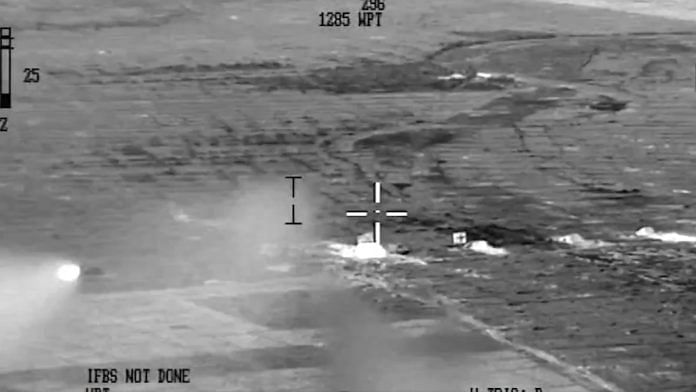Thank you dear subscribers, we are overwhelmed with your response.
Your Turn is a unique section from ThePrint featuring points of view from its subscribers. If you are a subscriber, have a point of view, please send it to us. If not, do subscribe here: https://theprint.in/
The aftermath of Operation Sindoor, a calibrated cross-border military strike by India in response to the Pahalgam terror attack has triggered a critical review of the country’s diplomacy. While the operation showcased India’s expanding military capabilities, it is the battle for global perception and diplomatic influence that remains unresolved.
A Strategic Break from the Past
Operation Sindoor was not just a kinetic response, it marked a significant doctrinal evolution. By synchronizing conventional strikes with cyber, space, and information warfare tools, India entered the era of integrated multi-domain operations. It was a visible shift from reactive posturing to strategic assertion.
For India, the message was clear: cross-border terrorism will not go unanswered. The operation was as much about deterrence as it was about messaging. Precision strikes, use of loitering munitions, and space-based surveillance formed the hardware. But it was the software of diplomacy and communication that would determine the global fallout.
Coordinated Diplomatic Outreach
In the hours following the operation, India launched a high-speed diplomatic campaign. National Security Advisor Ajit Doval and Ministry of External Affairs (MEA) officials briefed global counterparts from Washington to Tokyo. Key UN Security Council members were approached, and Indian ambassadors issued statements highlighting India’s restraint and legal justification.
In a notable first, New Delhi also dispatched bipartisan delegations including opposition MPs to signal national unity. This proactive diplomacy marked a shift from the older, reactive model where India explained its actions only after the fact. Here, India sought to control the narrative in real time, with legal framing and political consensus front and centre.
The Global Response: Supportive but Conditional
Reactions from global powers were supportive, though nuanced. The United States, France, Australia, and Japan endorsed India’s right to self-defence. Their messaging highlighted the operation’s precision and limited scope, with subtle praise for India’s restraint. Yet, these statements were often accompanied by calls for de-escalation, suggesting that support had limits.
Russia, a long-time defence ally, offered only tepid support, emphasizing regional stability over India’s sovereignty claims. Iran and Turkey criticized India outright, accusing it of acting disproportionately. Continental Europe, especially Germany and Scandinavia, remained measured, focusing more on humanitarian concerns than strategic context.
These reactions point to an uncomfortable reality: friendships in international politics are often transactional. Alignment cannot be assumed; it must be continually negotiated through a mix of strategy, persuasion, and values.
Losing the Perception War Online
Where India’s elite diplomacy held ground, its public diplomacy lagged. In digital spaces and among global publics, especially across the Islamic world and liberal circles in the West, India’s image took a hit. Comparisons to the Gaza conflict gained traction on platforms like TikTok and Instagram, despite clear distinctions in motive and method.
Disinformation campaigns, some reportedly linked to Pakistan and sympathetic Islamist networks, amplified these narratives in Arabic, Turkish, French, and German languages. India, largely focused on English-language briefings and state-level communication, was underprepared for this perception battle.
The result: a growing chasm between diplomatic messaging and public opinion. India’s moral legitimacy, while clear to its partners, was questioned in the digital town squares of the world.
Why Soft Power Matters More Than Ever
This episode underscored India’s urgent need to build soft power capabilities in parallel with hard power. Public sentiment, especially in democracies, increasingly shapes foreign policy. If India wishes to be seen not just as a responsible regional actor but as a rising global power, it must engage global audiences beyond chancelleries.
This means:
- Investing in multilingual public diplomacy that communicates not just facts but emotions and values
- Training digital storytellers and counter-disinformation units capable of responding swiftly in global languages
- Framing strategic actions in humanitarian terms, spotlighting civilian protection, legal basis, and moral restraint
Soft power cannot be an afterthought. It must be embedded in the strategic design of every foreign policy move
Toward Narrative Sovereignty
Operation Sindoor was a turning point for India’s security doctrine. But it also revealed the limits of traditional diplomacy in a world where perception moves faster than policy. In a landscape shaped by media virality and emotional storytelling, narrative sovereignty is the new frontier.
India has demonstrated strength on the battlefield and composure in diplomatic forums. But it now needs to win the larger contest: defining its global image on its own terms. That means crafting stories, shaping beliefs, and owning the narrative arc in a fragmented and fast-moving world.
A Twin Mandate for India
Operation Sindoor’s true success will depend on how India now consolidates its strategic and narrative gains. In today’s world, hard power wins battles, but soft power sustains influence. To rise as a global power, India must pair battlefield credibility with storytelling strength – defending borders while inspiring minds.
These pieces are being published as they have been received – they have not been edited/fact-checked by ThePrint.


